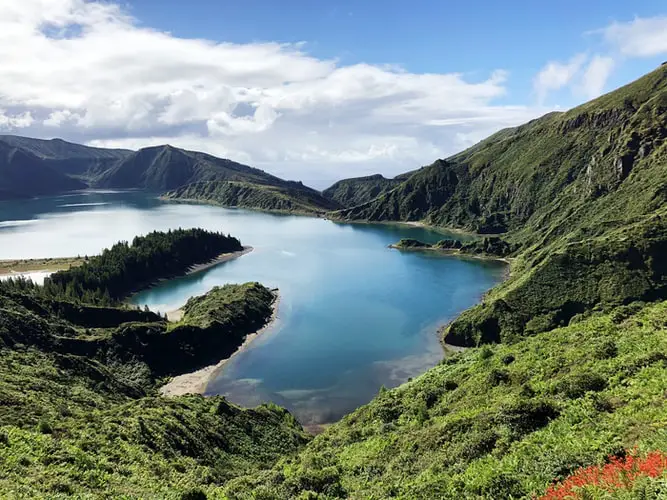Looking to explore the Azores?
Often referred to as Europe’s “Best Kept Secret”, the Azores have become an increasingly popular destination with year-round appeal for travelers.
This cluster of nine idyllic islands off the coast Portugal is an off-the-beaten path destination packed with natural beauty, striking landscapes, and tangible authenticity.
The Azores Islands are a Portuguese archipelago in the North Atlantic Ocean, located about 1,500 km (930 mi) from Lisbon and about 3,900 km (2,400 mi) from the east coast of North America.
The Monchique islet on Flores Island, located at 31° 16′ 24″ W is regarded as the westernmost point in Europe, even though from a geological standpoint the two westernmost Azorean islands (Flores and Corvo) actually lie on the North American plate. Nowadays the Azores’ main industries are tourism, raising cattle for milk and meat, and fishing.
Does this sound like your next adventure destination? Read on or jump to the headlines that peak your interest!
Key points
| Topic | Key Points |
|---|---|
| Location | Cluster of nine idyllic islands off the coast of Portugal |
| Approximately 1,500 km from Lisbon, 3,900 km from the east coast of North America | |
| History | Populated in the 15th century by pioneers from Portugal |
| Small groups of Flemings also settled in some of the islands | |
| Center of trade between Europe, America, and India during the 16th and 17th centuries | |
| Natural Geography | Over 170 volcanoes, nine of which are still active |
| Numerous volcanic cavities, calderas, lakes, fumaroles, and thermal water springs | |
| Attractions | Unspoiled landscapes with over 60 hiking trails |
| Natural thermal pools and hot springs | |
| World-class whale watching and dolphin spotting | |
| Unique cuisine and diverse heritage influenced by various settlers | |
| Islands | Corvo (Black Island) |
| Flores (Pink Island) | |
| Faial (Blue Island) | |
| Pico (Grey Island) | |
| São Jorge (Brown Island) | |
| Graciosa (White Island) | |
| Terceira (Lilac Island) | |
| Santa Maria (Yellow Island) | |
| São Miguel (Green Island) | |
| Wildlife | Whales, dolphins, birds, endemic bats, and other mammals |
| Best Time to Visit | Summer is most popular, but year-round mild temperatures make it enjoyable all year long |
| Tourism and Conservation | Sustainable practices and conservation efforts promoted to maintain the natural wonder |
History
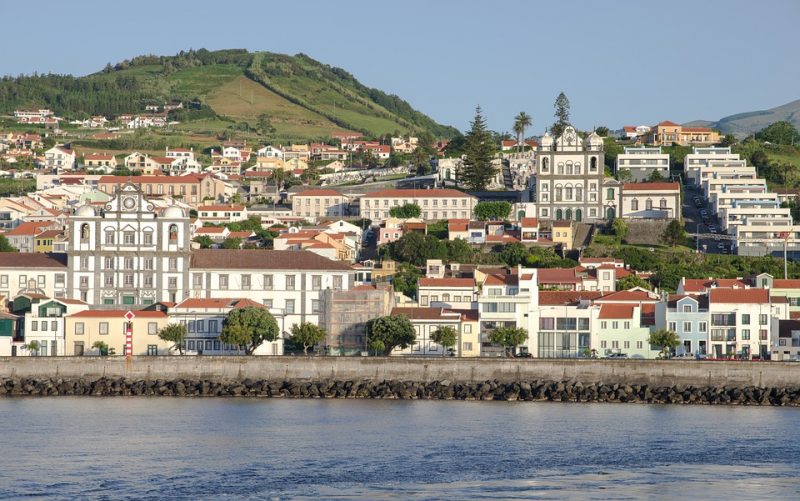
The Azores islands were populated in the 15th century by pioneers from Portugal, although small groups of Flemings settled in some of the islands.
During the 16th and 17th centuries the Azores archipelago was one of the centers of trade between Europe America and India, and its ports sheltered and serviced galleons loaded with treasures.
Officially, the first islands were discovered in the fifteenth century by Diogo de Silves a Captain at the service of Infante D. Henrique. Important naval battles were fought in the waters of the Azores in that period, during the attacks by corsairs and pirates.
The following centuries were calmer, but in 1829 the Azores returned to the pages of history with the role played by Terceira in the struggle against the absolutist forces, and as the base for the liberal forces invading the mainland Portugal to regain power.
The archipelago developed during the 19th and 20th centuries with the introductions of new crops, the developing of industries, and progress made with stock-breeding and fisheries. The last few years have witnessed a slow but progressive improvement in the economic and social well-being of the population.
Most of this improvement is due to the inflow of capital donations from emigrants (almost all from North America), the annual leasing of the Lajes Air Field to the United States, and grants from the European Community
Natural geography
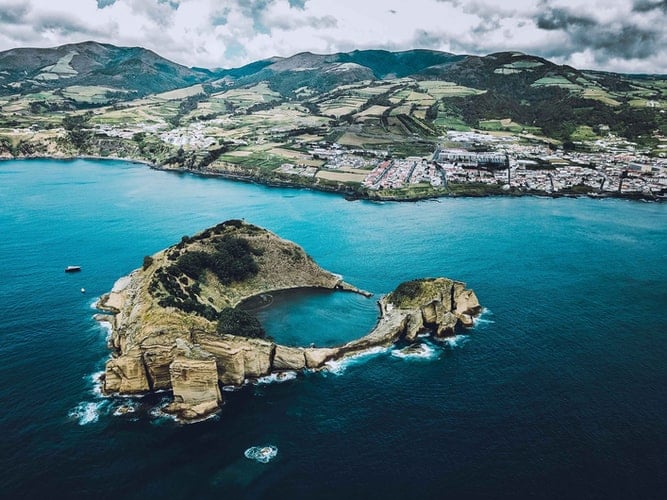
The genesis of the Azores is found upon 1766 volcanoes, nine of which are still active. Underground, almost three hundred volcanic cavities, including caves, ravines and cracks, have been surveyed. The landscape is filled with dry calderas, craters lakes, fumaroles and thermal water springs.
In the sea, there are submarine geothermal springs. The mountain of Pico, majestic and with an intact cone, appears to be protecting all this geological wealth. The volcanism of the archipelago impresses for its diversity and creates its own magnetism. It is a witness to the power of Nature, and the basis for very special experiences.
Attractions
Unspoiled landscape
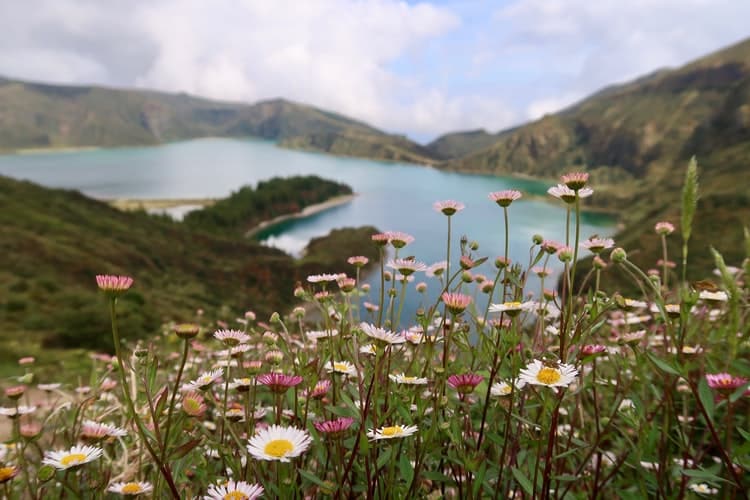
The Azores are a world-class destination for adrenaline seekers and nature lovers alike, and the best way to truly discover all the hidden gems around the islands is by hiking.
Whether you book a hiking tour with a knowledgeable local guide or hit the trails on your own, the Azores have more than 60 hiking trails with all the conditions for walking safely.
Venture out and explore lush forests and ravines, wave hello to friendly cows as you walk across the green patchwork countryside, admire the reflection of the beautiful lakes and lagoons as you hike around volcanic landscapes, and appreciate the salty sea breeze as you pass through UNESCO protected vineyards on your way down to the coast.
Natural springs
The Azores’ unique volcanic origins make these islands a thermal paradise with steamy, iron-rich pools tucked away amid lush green vegetation and tropical trees; and even a natural ocean pool heated by a volcanic vent, cooled by the ebbing tides of the Atlantic.
If you’re looking for a vacation destination where there’s a lot more to do than sightseeing, then the Azores might just be the destination you didn’t know you were looking for.
Being located in the middle of the Atlantic brings unpredictable weather no matter the season. But, no matter the forecast, visitors and locals alike can enjoy the thermal pools of the Azores any time of year. You can find warm water to relax in year-round in one of the many natural thermal pools and hot springs.
World-class whale watching, Dolphin, and shark diving.
The Azores Islands are known for their unparalleled beauty and biodiversity adored by outdoor adventure enthusiasts and nature lovers alike; but they are also one of the fastest-growing whale watching destinations in the world.
Located in the Atlantic Ocean between Portugal and North America, the Azores are a permanent home and natural point of passage to more than 20 different types of whale and dolphin species making the islands one of the world’s largest whale sanctuaries.
The Azores’ winning combination of unique volcanic origins, deep waters off the coast and mild air and sea temperatures from the Gulf Stream make the archipelago the ideal location for visitors to come and spot a wide array of species on a Whale Watching adventure.
Cuisine
The Azores Islands are a delight for foodies. The archipelago’s many unique microclimates, abundant water supply and the volcanic nature of the islands make it possible to offer a large variety of delicious dishes. Based on a rich, hearty, peasant-based style of cooking, Azorean cuisine will leave you asking for seconds.
Unique heritage
Years after discovery, The Portuguese began to settle there in 1439. Later, Flemish settlers came to the islands, as did Italians, Scots, English, Bretons, and some Jewish farmers. The Azores were occupied by Spain from 1580 – 1640 and used as a base for Spanish ships. Long considered a colony of Portugal, the Azores became an autonomous region of Portugal in 1976.
The islands
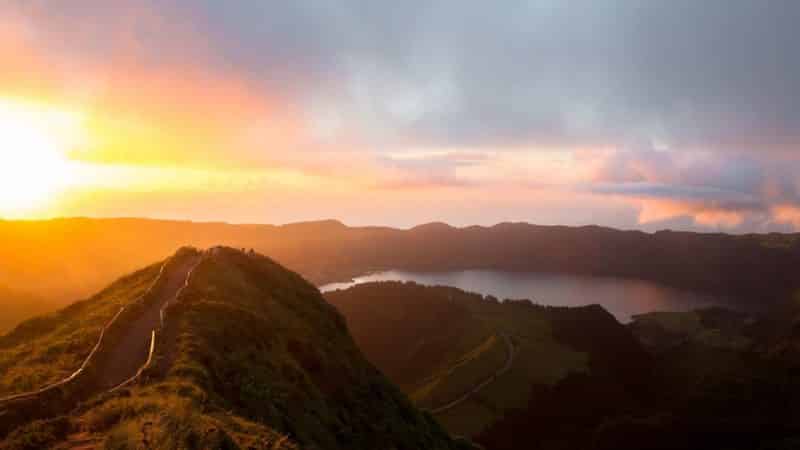
Delve into the magic offered by the 9 islands of the Azores; nicknamed and alternatively known by representative colors.
Have a look for yourself…
Corvo ( Black Island)
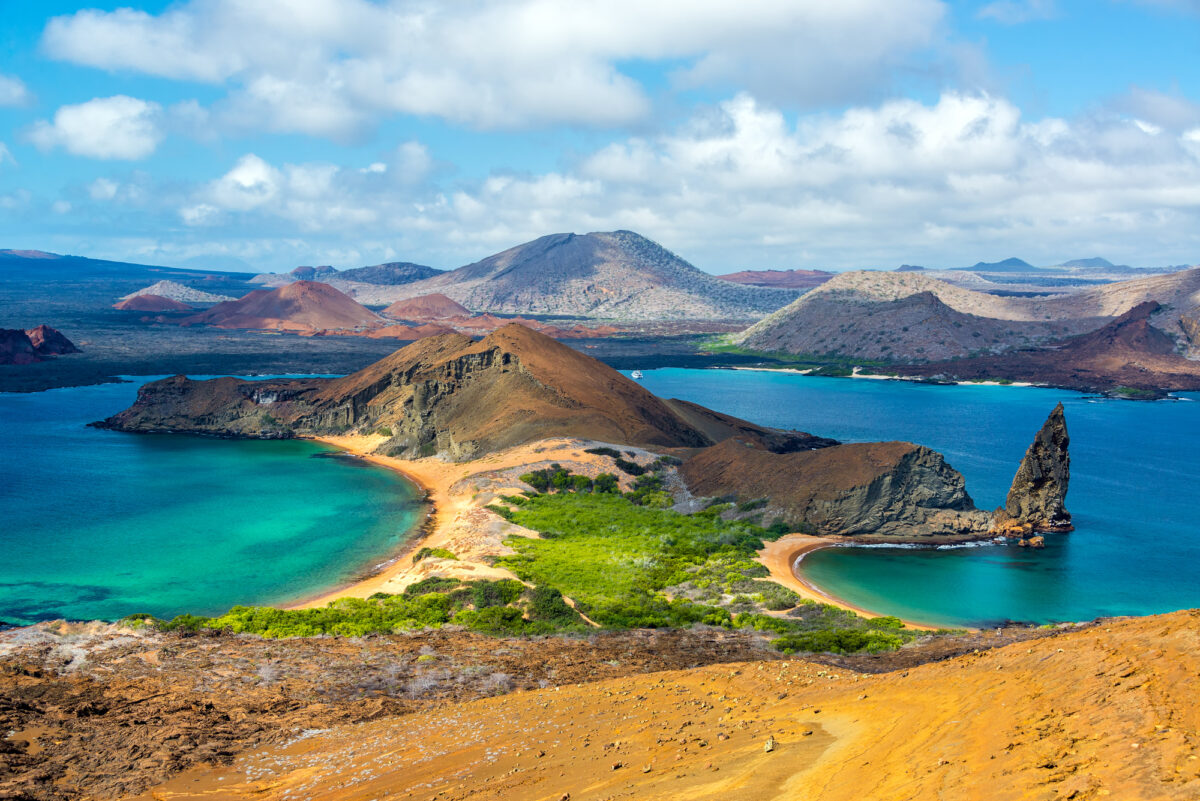
The smallest of all Azores islands and a peaceful sanctuary. In Vila Nova do Corvo, narrow cobblestone streets and the Church of Nossa Senhora dos Milagres. In Caldeirao (enormous volcanic crater), there are two lakes with nine small islands, just like the archipelago.
The smallest of the Azores, Corvo island has only one village, which is home to 468 locals — one of the smallest communities in Europe. The properties are divided by the same black basalt rocks that many of the homes are built out of, and locals still speak in a medieval dialect of Portuguese. Corvo is also a favorite among bird-watchers,
Flores ( Pink Island)
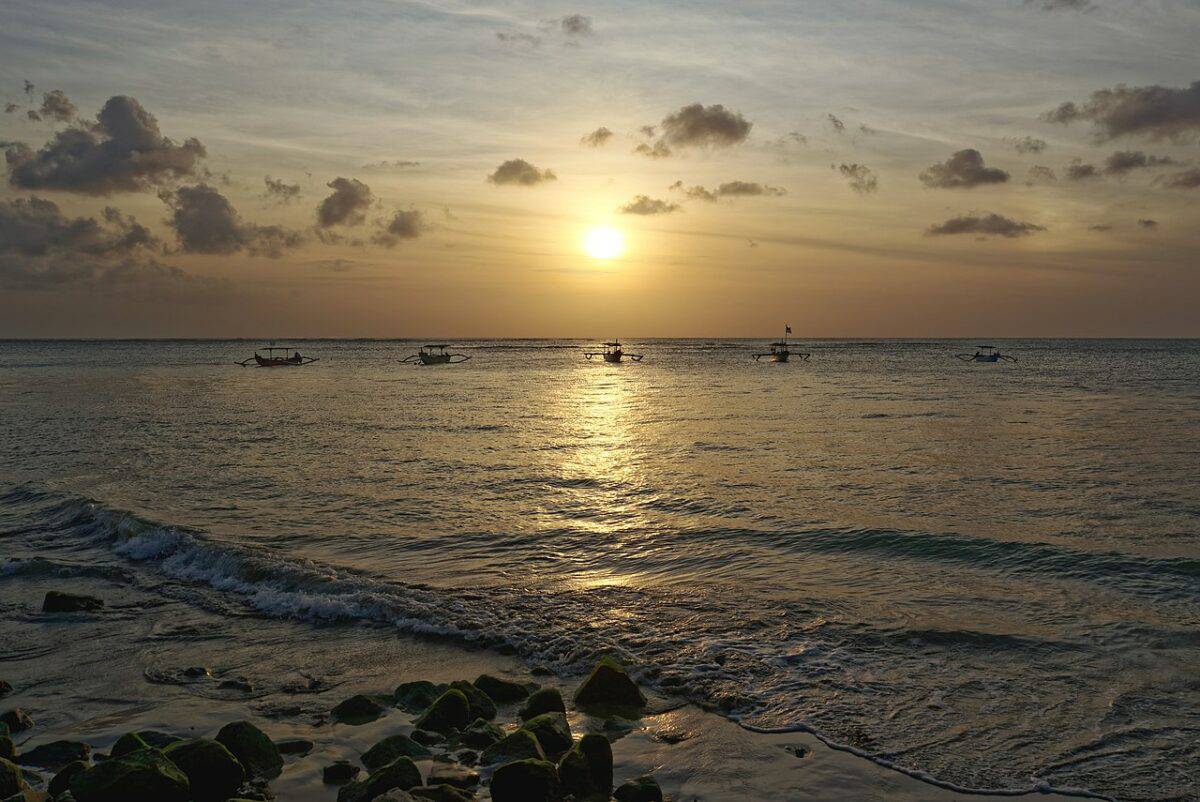
The island gets its name (meaning Flowers) from the luxuriant botanical garden of a landscape covered in goldenrods and pink and blue hydrangeas. It’s one of the few UNESCO Biosphere Reserves in the world, which is a protection given for natural landscapes.
Another island favored by outdoor enthusiasts, Flores gets high annual rainfall, which pays off with an abundance of lagoons, deep blue crater lakes and dozens of waterfalls.
Faial ( Blue Island)
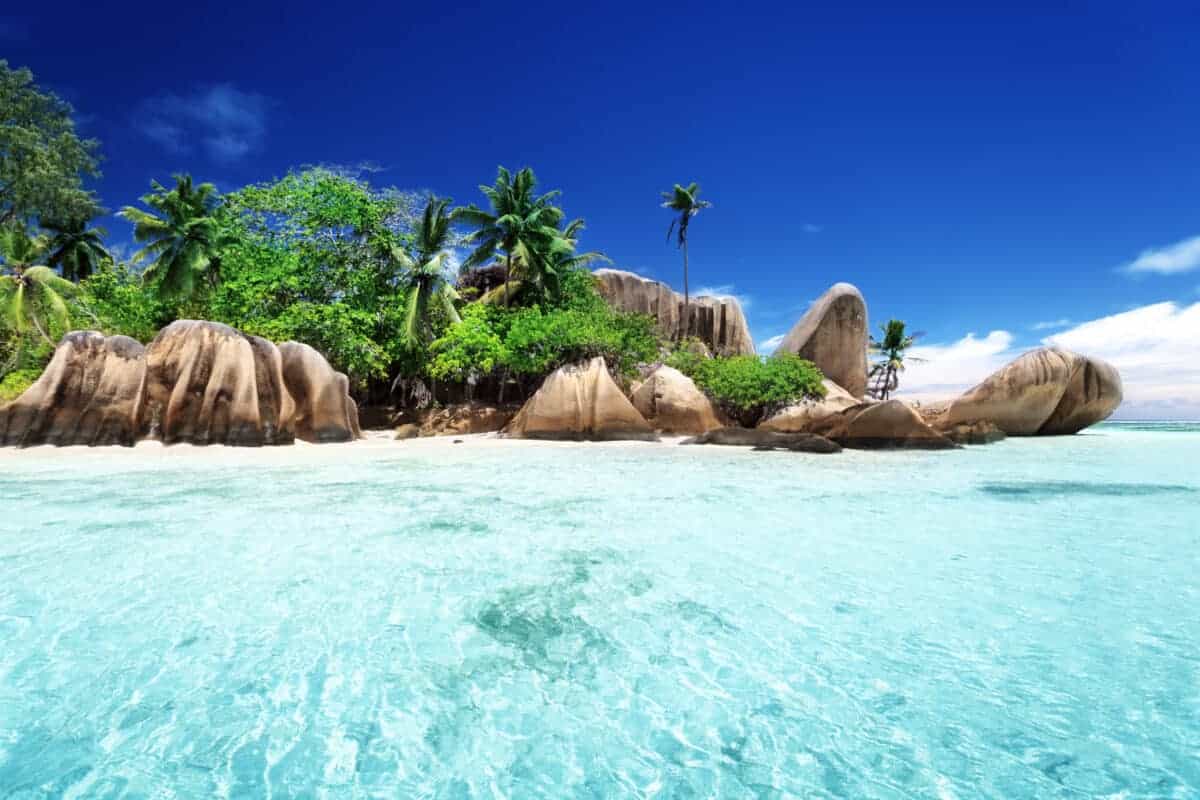
Nicknamed the “Blue Island” for its bursting of blue hydrangeas that cover the island in the summer months,Faial is one of the favorite central islands in the Azores.
In Horta, the famous yacht harbor, look at the beautiful tiles and gilded carvings in the 17th and 18th century churches of Sao Salvador, Nossa Senhora do Carmo and Sao Francisco.
To visit: Sacred Art Museum, Nossa Senhora das Angústias Church, Nossa Senhora do Pilar Chapel, Imperio dos Nobres and Porto Pim fortifications, Caldeira Natural Reserve, Capelinhos, grottoes and caves in Costa da Feteira and Monte da Guia belvedere.
Pico ( Grey Island)
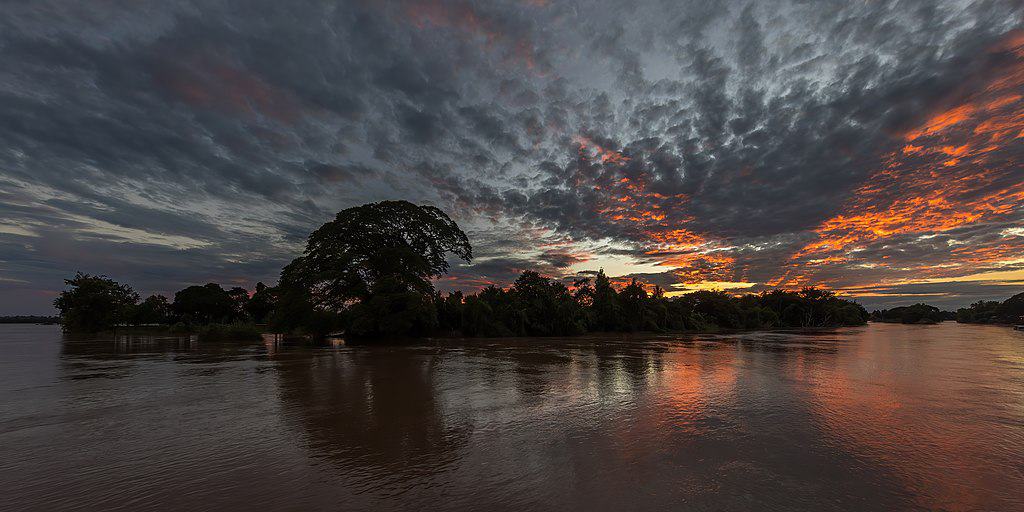
Characterized by black volcanic soil, Pico Island is covered with basalt (lava rock) lined vineyards that are UNESCO World Heritage Sites.Pico features the highest mountain in the Azores and Portugal.
Owes its name to the 7713 ft high volcanic cone. Special reference to Sao Roque do Pico, with its 18th century churches of Sao Roque and Sao Pedro de Alcântara; Lajes do Pico, with its Whale Museum; Madalena, with its Wine Museum and 17th-century church, and Areia Larga, with beautiful winery manor houses. Other places: Calheta de Nesquim, Candelaria, Criacao Velha, Piedade (forest preserve), Prainha do Norte, Santa Luzia, Santo Amaro, Sao Caetano, Sao Joao and Sao Mateus
Sao Jorge ( Brown Island)

São Jorge may be small, but its scenery is dramatic, shouldered with mountains that tumble into deep ravines, rocky cliffs, crater lakes and characteristic fajãs (plains formed by lava flow).
The fertile brown soil and dark rock striations lend it its nickname, and the island is a favorite among outdoor and adventure enthusiasts — you can do everything from mountain biking to canyoning, hiking, canoeing and spelunking.Velas, with its fishing port, is the main town.
One can admire its manor houses, the churches of Sao Jorge (17th century), and Nossa Senhora da Conceicao, Town Hall (Azorian Baroque) and 18th-century walls. Do not miss Calheta, Manadas, Ribeira Seca, Topo, and Urzelina.
Graciosa ( White Island)
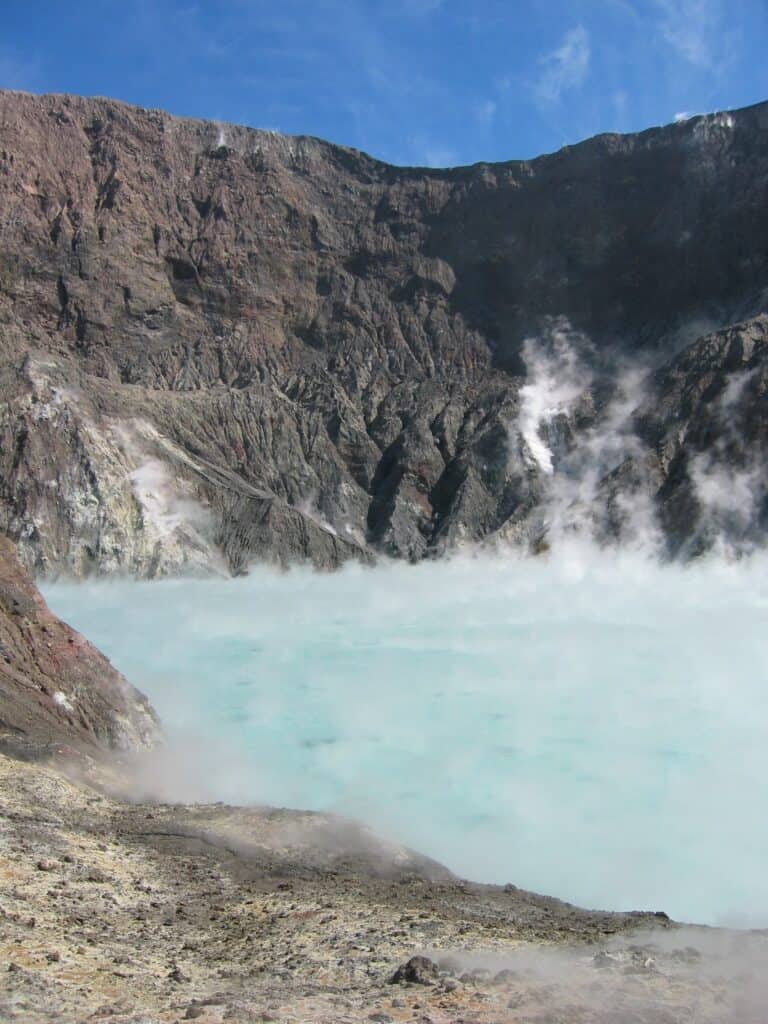
This small island is serene enough to live up to its name, which translates as Enchanting. Graceful white rocks line the coastline, and red-turreted windmills dot the landscape.
In Santa Cruz da Graciosa you will find ancient streets and manor-houses, a beautiful mother-church (16th-18th centuries), Santo Cristo Church (16th century), Cruz da Barra (Manueline) and Ethnographic House. In the Furna do Enxofre, dazzling sights and a vaulted cave over an underground lake (between 11 am and 2 pm the sunlight filters in). You must also visit Guadalupe and its Baroque church, Luz and Praia (typical windmills).
Terceira ( Lilac Island)
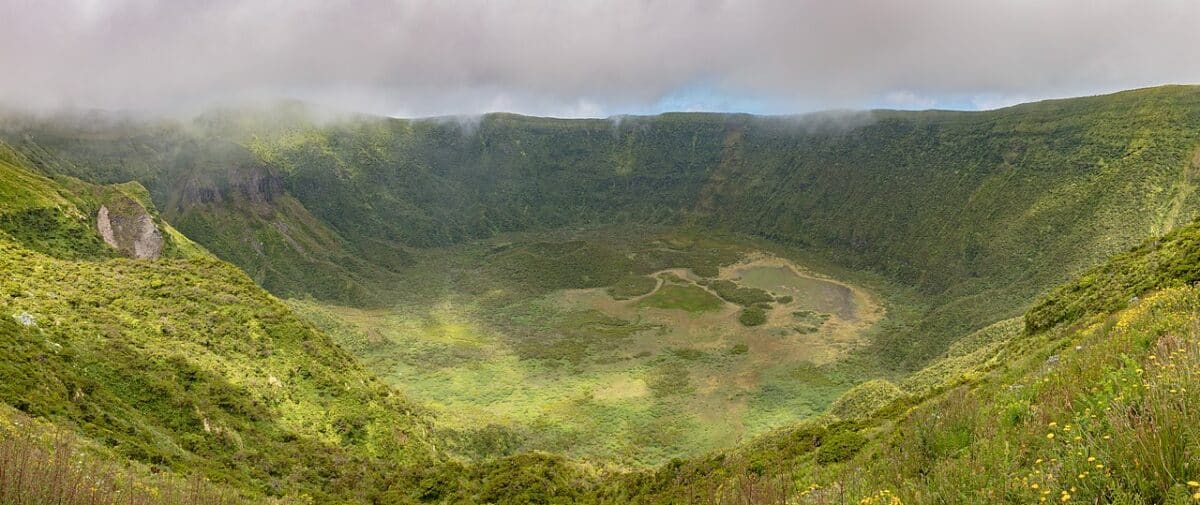
With patchwork fields crisscrossing the emerald landscape and a cow population that’s almost double the amount of people, Terceira’s gorgeous scenery is reminiscent of the Irish countryside.
Angra do Heroísmo, the main city and a UNESCO World Heritage Site. The historic centre of its capital, Angra do Heroismo, has been classified in UNESCO’s International Heritage list.
Special reference to the forts of Sao Sebastiao and Sao Joao Baptista (16th-17th-centuries); the palaces of the Bettencourts (Baroque) and of the Capitaes-Generais; the Cathedral, with its silver altar front and treasure; the churches of Colegio dos Jesuitas, Sao Goncalo and Nossa Senhora da Conceicao (17th-century); the churches of Misericordia and Nossa Senhora da Guia (18th-century, the latter encloses the Angra Museum). Other points of the third largest island in the Azores are: Praia da Vitoria, Santa Barbara, Sao Sebastiao, and Vila Nova.
Santa Maria ( Yellow Island)

The oldest of the Azores, it’s known as the “mother island” of the archipelago. It’s a bit flatter than the others, which means it’s more of a true beach island, with pale yellow sands and warm water year-round.
Offers excellent water sports facilities. Special mention to: Praia, Santo Espirito, Sao Lourenco, Sao Pedro, and Vila do Porto, a village with superb manor houses, mother-church, and Nossa Senhora dos Anjos Chapel (where Columbus’ crew prayed).
Sao Miguel ( Green Island)
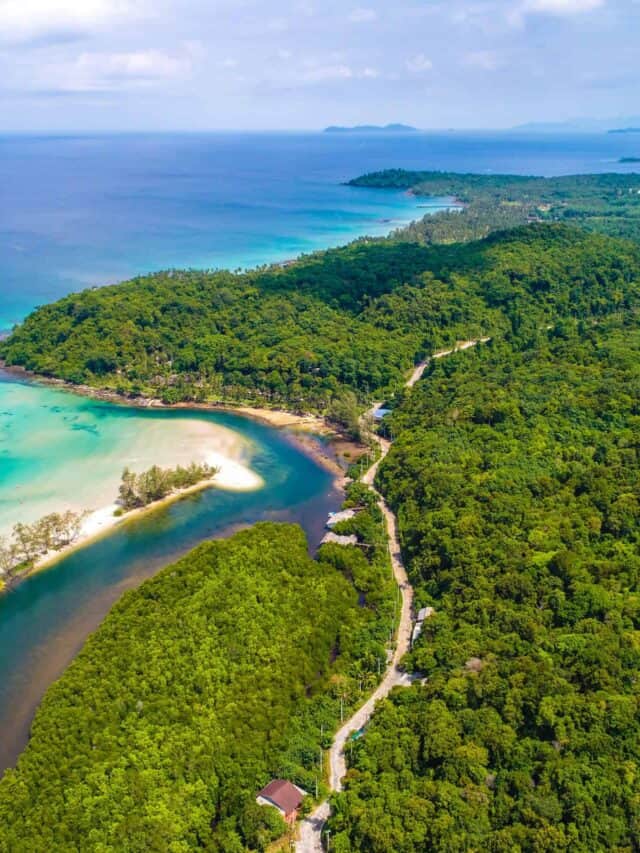
Nicknamed the “Green Island” for its lush landscapes and rolling hills, the largest of the Azores is also the most visited of the islands. Some of the Azores’ most iconic views and famed crater lakes are found on this island at Sete Cidades and Lagoa do Fogo. Sao Miguel island is the biggest of all Azores islands.
In Ponta Delgada, the capital, the famous 18th-century portals open up to a number of monuments that are worth visiting, most of them built between the 16th and the 18th century: Carlos Machado Museum and churches of Sao Sebastiao, Sao Pedro, Sao Jose, Colegio, and Nossa Senhora da Conceicao; convent and chapel of Nossa Senhora da Esperanca and Santa Ana Chapel. Palaces: Fonte Bela and Santa Ana; Conceicao and Santa Catarina; Casa de Carlos Bicudo and the Pacos do Concelho. Other places to visit: Caldeira das Sete Cidades (green and blue lakes); Lagoa do Fogo; Ribeira Grande; Vale das Furnas (spas and hot mineral pools) and Vila Franca do Campo.
Wildlife

Hugely popular as a tourist activity, whale and dolphin spotting is unmissable when you visit the archipelago. This experience will be one to remember forever; you’ll go out in a boat on the open ocean and have the chance to see dolphins surging through the waters and even, sometimes, leaping out of it. They may also swim side by side with your boat!
Some of the most common dolphin species in the area are the Bottlenose and the Striped.
When it comes to whales, you may be lucky enough to spot the False Killer whale, Pilot whales, and Sperm whales, which we’re confident you’ll love.
Recently, 28 species of cetacean can be found in the area, providing you with ample opportunity to see, at least, one. You can take several boat trips out of Faial, Graciosa and Pico which will also allow you to spot several seabirds along the way.
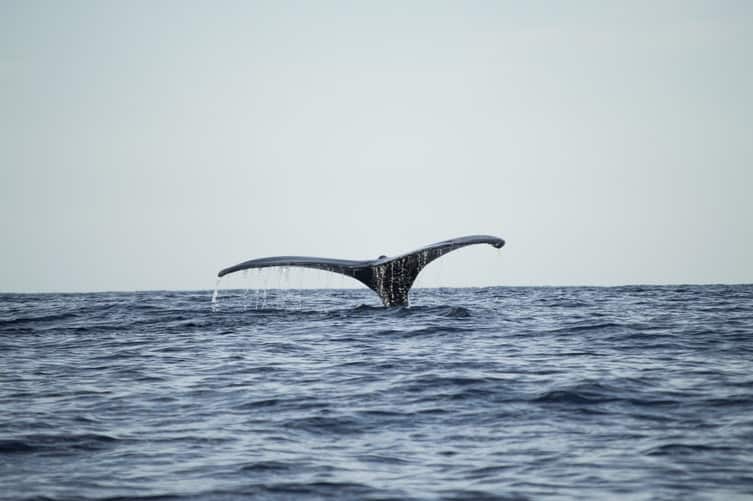
The best time to go out into the deep waters in search of these gorgeous animals is from mid-April to mid-October. Of course, should you visit outside of these months, you still have the chance of spotting these stunning animals, as they reside in the area all year round.
The Azores Noctule, which is the only diurnal insectivorous bat, is endemic to the dry forests of the Azores. It can be found on most of the islands in the archipelago and roosts in buildings, caves and hollowed-out trees.
One of the theories surrounding the fact that this species of bat forages during the day due to the low number of avian predators in the islands. You will also be able to see the European Hedgehog and the Least Weasel, as well as many other mammals.
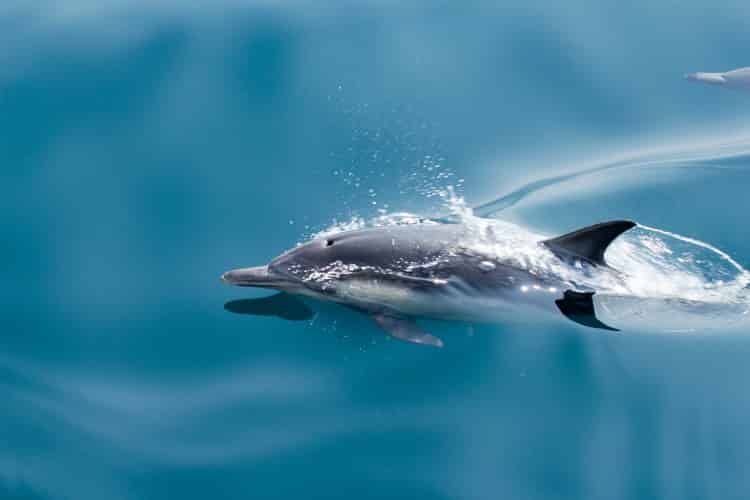
Besides being a prime location to spot whales and dolphins, the Azores is also a great place to see a fantastic array of birds. ( 400 species)
When to visit
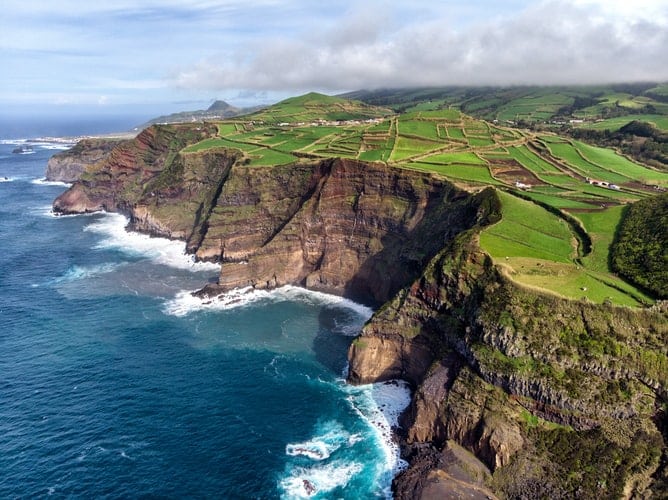
Summer is the most popular time of the year for visitors, but the great thing about the Azores is that due to the mild temperatures year-round, there’s no such thing as an “off season” here.
Summer in the Azores is a beautiful time of year for enjoying the black sand beaches, crystal clear waters, blooming hydrangeas and picnics by the lake, but these islands can truly be enjoyed all year round, including the Fall and Winter months. What is the appeal for visiting during the shoulder seasons? Less tourists, cheaper prices, and cooler weather.
What to do
With 9 islands worth of exploring to do, we’ve given a top list of activities.
Whale Watching
The most sighted marine life:
- sperm whale
- sei whale
- fin whale
- pilot whale
- mink whale
- common dolphin
- bottlenose dolphin
- Atlantic spotted dolphin
- striped dolphin
- Risso’s dolphin
These animals can be seen in many places around the Azores but the waters around the islands of Pico and São Jorge harbour some of my favourite spots.
It’s simply an amazing experience to be out in the middle of the Atlantic Ocean and to see a massive whale swim by gracefully against the backdrop of the magnificent conical peak of Pico or the awe-inspiring cliffs of São Jorge. Blue whales, humpback whales, orca’s, false orca’s, pigmy sperm whales and Northern bottlenose whales can sometimes be spotted passing through the channel that separates these islands.
Diving
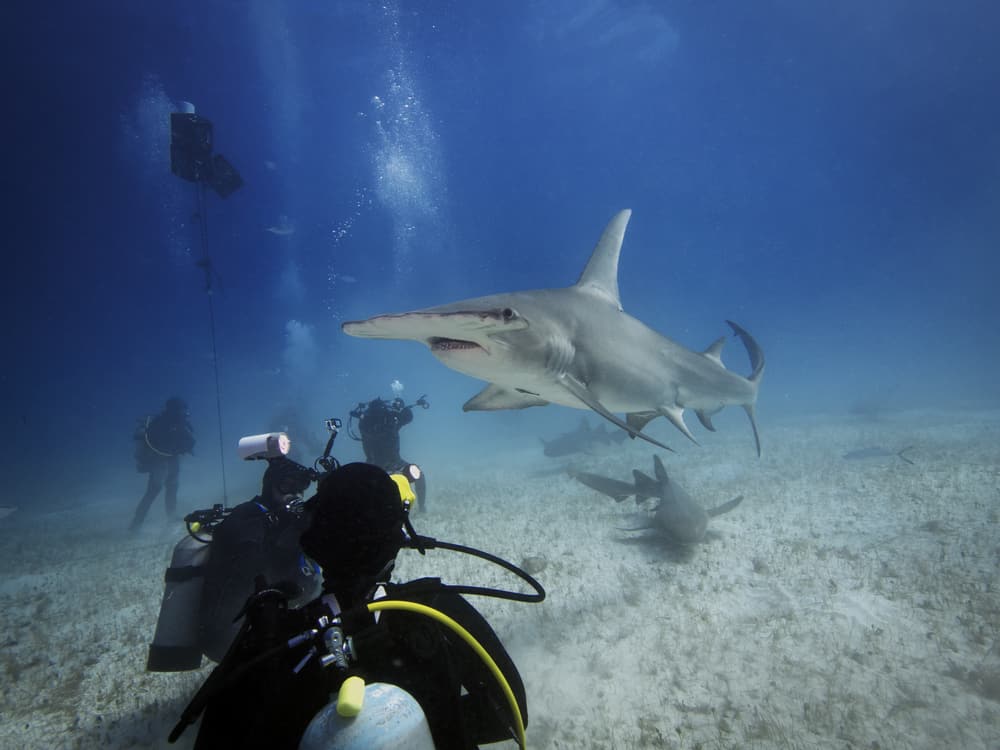
Encounter whales, dolphins, sharks and manta rays! These are the top locations for diving with marine life in the Azores!
#1 Princess Alice, Pico Island
#2 Formigas Islets
#3 Santa Maria
#4 Dom João De Castro Bank
#5 Terceirense Wreck, Graciosa Island
Birdwatching
Bird watching can be practiced in all of the Azores islands though most notably in São Miguel and Graciosa for endemic species, as the Terceira islands are famous for gulls and waders, and Flores and Corvo for American Passerines. There are plenty of breathtaking sights on each exotic island.
HorseBack Riding
Those who love horses will discover a riding haven in the Azores, an archipelago home to many well-trained Lusitano and Cruzado Portuguese horses. These islands offer breath-taking landscapes and views over the Atlantic Ocean, paired with colourful gardens and green pastures
Nature Trails
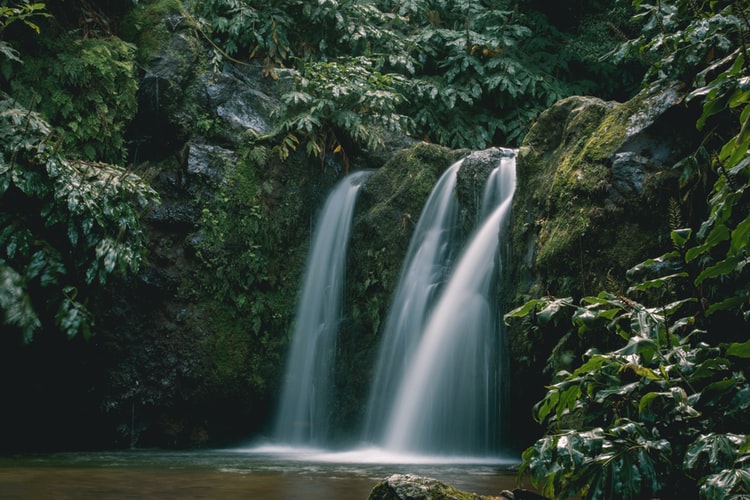
In the Azores, for centuries, the easiest way to travel from one place to another within the same island was by sea; in fact there were not many paths and few were suitable for carriages or oxcarts. There were mainly footpaths, which the islanders used in their daily toil, accompanied by horses, donkeys and mules, of course.
The paths were also used to take cattle to or from the pasturelands. The locals also used these paths for festivities in the vicinity, and for transporting agricultural produce, fish, charcoal and other merchandise to trade. Anything larger was transported by boat.
It is this network of footpaths that has been restored and made accessible to all . Indeed, each of these footpaths goes through exceptionally beautiful areas. Linking almost all of the corners of each of the islands, both along the coastlines and in the uplands.
Tour Operators
- CW Azores Tours: Whale Watching in the Azores
- Noberto Tours: Diver Activities
- Visit Azores: Customized tours
- Seazores: Sea adventures
- Azores Getaways: Authentic Tours
Our Founder Chris and his Azorean Adventure
Animal’s Around the Globe’s very own founder, Chris, recently embarked on a life-changing trip to the Azores. This is what he experienced…
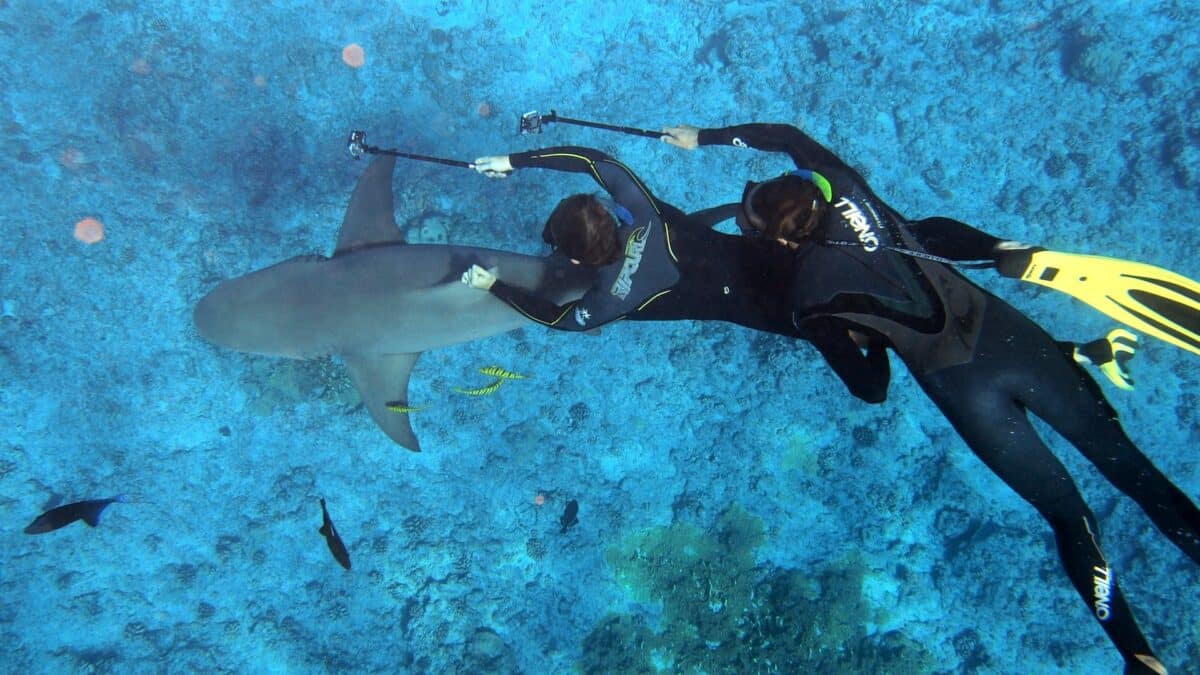
Chris set sail to the dream of visiting the Azores. His trip commenced in the Summer month of July, the best time to witness and encounter indigenous wildlife. Recommended as a safe, vibrant, affordable and easily accessible destination, Chris was excited to seek out the Azorean adventure!
Chris was lucky to encounter Blue sharks and manta rays whilst diving at the Princess Alice Bank off Pico Island. This is known as the best diving spot in the Azores! Most tours are locally run with the influence of foreign experts and travel/ wildlife enthusiasts. It is a safe and welcoming place to travel in Chris’s opinion.

Chris fell in love with the hospitality and vibrancy of local culture, the wildlife and nature he witnessed and encountered on the Piko and Faial Islands, the sustainable tourism and authentic connection to the essence of nature. A highly recommended visit! He hopes to return very soon to conquer all the islands.
Tourism and conservation
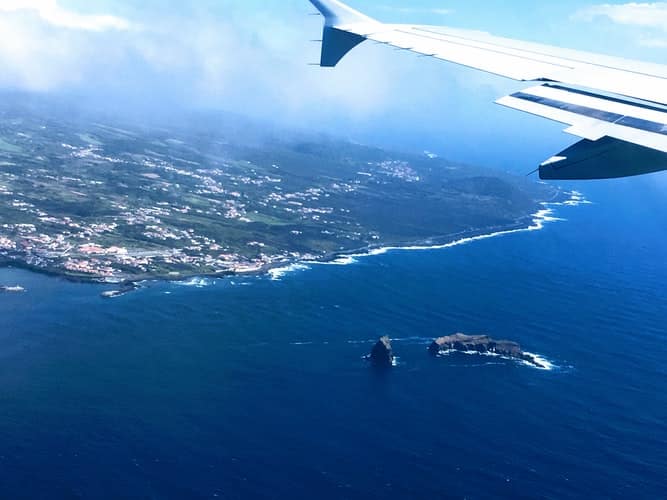
The number of American tourists visiting the Azores between the months of January and August shot up by 28.8 percent from 2016 to 2017. While the most recent stats available show a general leveling off in tourist numbers during that same eight-month period this year, at around 728,000 overnight stays by foreign tourists, the number of American travelers spending nights on the islands has jumped 14 percent since last year.
Government agencies must advise Global Sustainable Tourism Council to ensure they are hitting targeted goals for social engagement, environmental conservation, and responsible land management. This is the responsibility of actors to keep the Azores the natural wonder that attracts tourists in the first place.
It’s an alignment of interests at work. As more travelers grow conscious of the footprint they leave behind, the tourism space also benefits from sustainable practices. Azores Tourism, the regional government agency, today carries the slogan “Certified by Nature,” but has long promoted conservation.
Marine conservation in the Azores has reached a critical point. The environmental sector is now well established in the regional administrative structure. It is politically obliged to aim toward higher protection and ecosystem-based management.
Summary
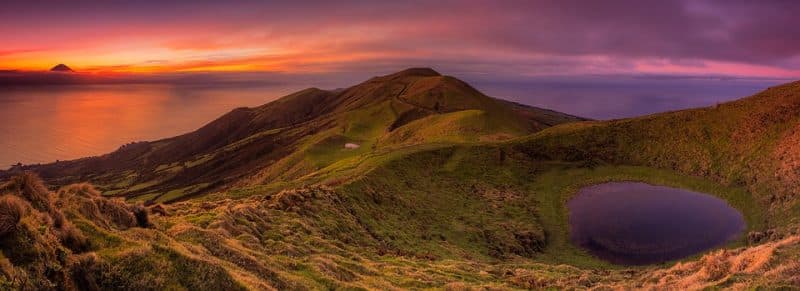
Discover everything the Azores have to offer when you explore the hidden gem of Portugal. Including the remarkable wildlife that delights both Azoreans and visitors alike.
If you enjoyed reading about the magic of the Azores Islands, you might like to take a look at our blogs featuring the wildlife of Greece, and encountering the sharks of the world. Let us know what you think!
Frequently Asked Questions (FAQs)
The best month to visit the Azores is generally during the summer, from June to August. This period offers pleasant weather, with mild temperatures and less rainfall, making it ideal for outdoor activities and sightseeing.
Yes, the Azores are definitely worth seeing. The islands offer a unique and untouched natural beauty, with stunning landscapes, volcanic features, and diverse wildlife. It’s a paradise for nature lovers and outdoor enthusiasts.
It is recommended to spend at least 5 to 7 days in the Azores to get a taste of its beauty and experience some of the main attractions. However, if time allows, a longer stay would allow you to explore each island more extensively.
The Azores have gained popularity due to their unspoiled nature, breathtaking landscapes, and diverse outdoor activities, including whale watching and hiking. The islands offer an off-the-beaten-path experience with a unique blend of European and island culture.
The Azores can be considered a moderately priced destination. While some aspects, such as accommodation and dining, can be relatively affordable, certain activities or tours might be more expensive due to the remote nature of the islands.
Join our Forum for free today!

- These are The 5 Largest Great White Sharks Ever Recorded - July 19, 2024
- The Surprising Benefits of Big Game Hunting - July 18, 2024
- $100k+ Hunting Experiences The Most Expensive Animals to Pursue - July 17, 2024

